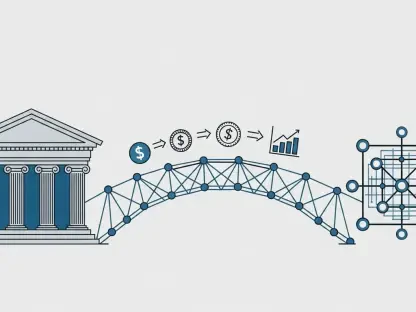I’m thrilled to sit down with Kofi Ndaikate, a seasoned expert in the fintech industry with deep knowledge in areas ranging from blockchain and cryptocurrency to regulation and policy. Today, we’ll explore his insights on leadership transitions in the tax technology sector, the transformative potential of AI, and the strategic direction of innovative companies like Vertex. Our conversation touches on the importance of aligning past experiences with new roles, the integration of cutting-edge technologies, and the challenges of navigating corporate shifts.
Can you share what might drive a seasoned tech leader to take on a CEO role at a company like Vertex at a pivotal moment in their career?
Absolutely. For many leaders, joining a company like Vertex often comes down to timing and alignment. It’s about seeing a unique opportunity to make an impact in a space where technology and compliance intersect. The mission to simplify tax processes through innovation can be incredibly compelling, especially when a company is already positioned as a market leader. Plus, if someone has a background in scaling tech or driving transformation at large organizations, they might see this as a chance to apply those skills in a fresh, high-stakes environment.
How do you think prior experiences at major tech firms can shape a leader’s approach to innovation in a specialized field like tax technology?
Prior roles at big tech firms often provide a playbook for innovation. Leaders learn how to navigate complex ecosystems, manage massive teams, and prioritize investments in emerging trends like AI. In tax technology, that experience can translate into knowing how to balance cutting-edge solutions with the practical needs of businesses. For instance, shaping AI strategies at a global scale can directly inform how to leverage similar tools to automate compliance or enhance data accuracy, ultimately creating value for clients in a very regulated space.
With recent advancements like AI acquisitions in the tax tech space, how do you envision such technologies being integrated into a company’s core offerings?
AI acquisitions signal a commitment to redefining how tax and compliance work. Integrating these technologies often starts with identifying pain points—say, manual processes or error-prone reporting—and applying AI to streamline them. It could mean automating tax calculations or using predictive analytics to flag potential issues before they arise. The key is ensuring the tech isn’t just a shiny add-on but deeply embedded into the platform, so it feels seamless to users while driving real efficiency.
Generative AI is often hailed as a game-changer. How do you see it reshaping the landscape of tax and compliance management for businesses?
Generative AI has the potential to revolutionize tax and compliance by making complex processes more intuitive. Imagine a system that not only processes data but also generates insights or even drafts responses to regulatory queries in plain language. It could drastically cut down the time businesses spend on compliance, freeing them to focus on strategy. Beyond that, it can help personalize solutions for different industries, adapting to specific tax codes or regional rules with a level of precision that’s hard to achieve manually.
What challenges might arise when adopting generative AI in a field as regulated as tax technology, and how can leaders address them?
The biggest challenge is ensuring accuracy and compliance with ever-changing regulations. AI models can sometimes produce outputs that aren’t fully aligned with legal standards, which is a non-starter in this field. Leaders need to invest in robust validation processes, pairing AI with human oversight to catch errors. There’s also the issue of data privacy—tax information is sensitive, so building trust through strong security measures is critical. It’s about striking a balance between innovation and reliability.
Drawing from your expertise, how can past experiences with major corporate transitions prepare a leader for stepping into a new CEO role during a period of change?
Corporate transitions, like spinning off a division or navigating a merger, teach leaders how to manage uncertainty and rally teams around a shared vision. These experiences build resilience and sharpen decision-making under pressure—skills that are invaluable when taking over as CEO. They also highlight the importance of communication, ensuring everyone from employees to stakeholders understands the direction. Applying those lessons can help stabilize a company during a leadership handover and set the stage for growth.
When a long-standing CEO transitions out, what can an incoming leader learn from their predecessor to ensure continuity while still driving innovation?
A long-term CEO often leaves behind a deep understanding of the company’s culture, customer base, and operational strengths. An incoming leader should tap into that wisdom—learning what’s worked, what hasn’t, and why. It’s about respecting the foundation while identifying areas for fresh ideas. For instance, understanding past growth strategies, like moving to cloud solutions or going public, can inform how to push boundaries with new tech without disrupting what’s already successful.
Looking ahead, what is your forecast for the role of AI in shaping the future of tax technology and compliance?
I believe AI will become the backbone of tax technology over the next decade. We’re moving toward a future where manual tax processes will be largely obsolete, replaced by systems that not only handle calculations but anticipate regulatory shifts and offer real-time advice. The challenge will be keeping pace with global regulations and ensuring ethical use of AI. But if done right, it could level the playing field, making compliance accessible and affordable even for smaller businesses, fundamentally changing how companies operate worldwide.









